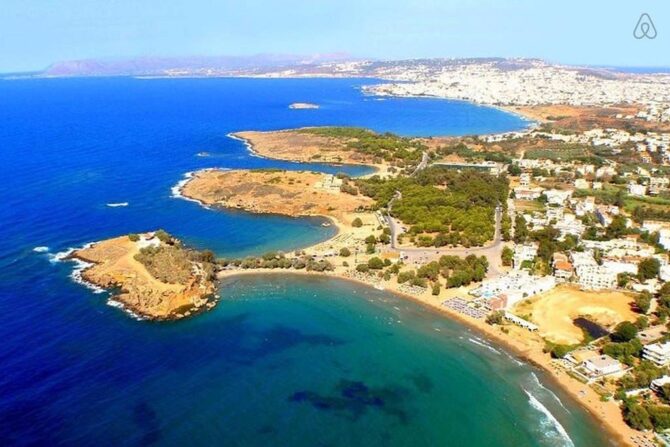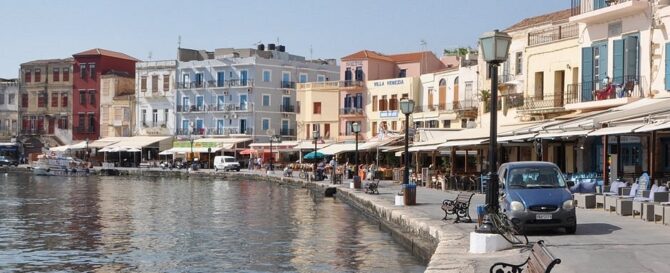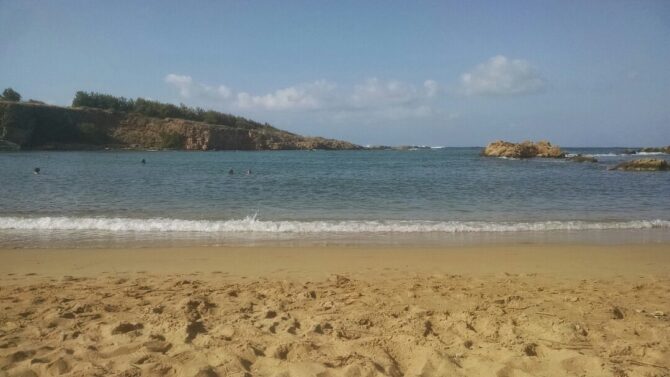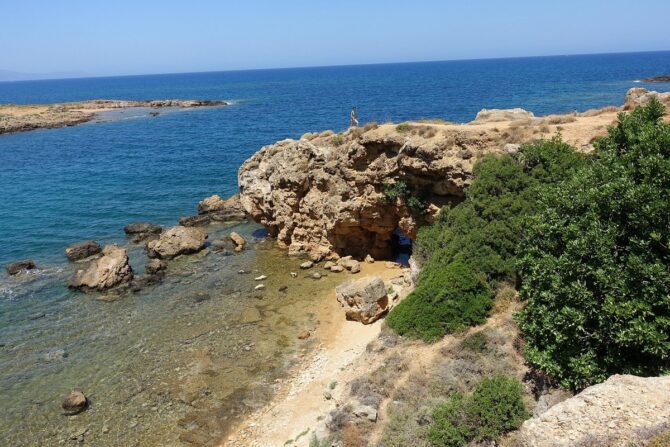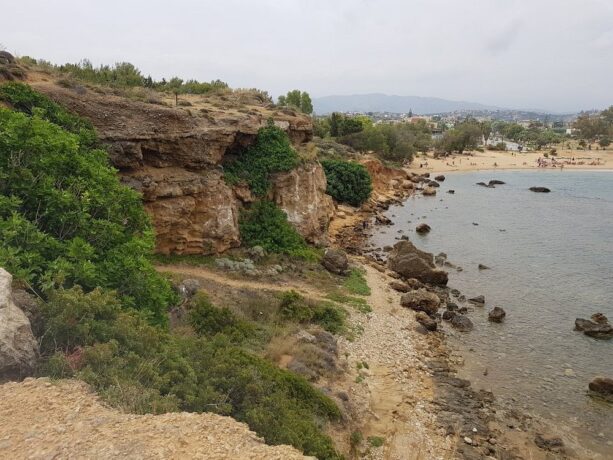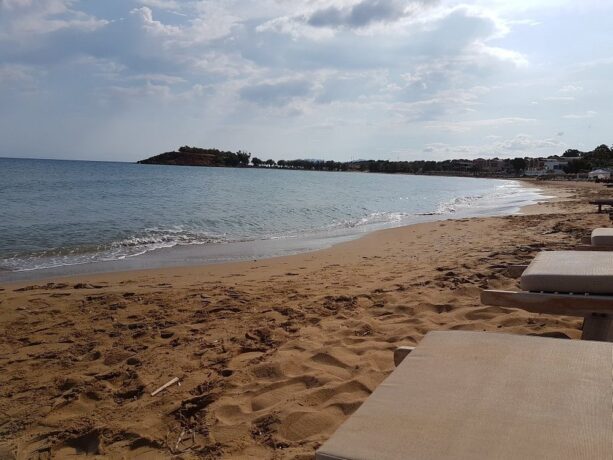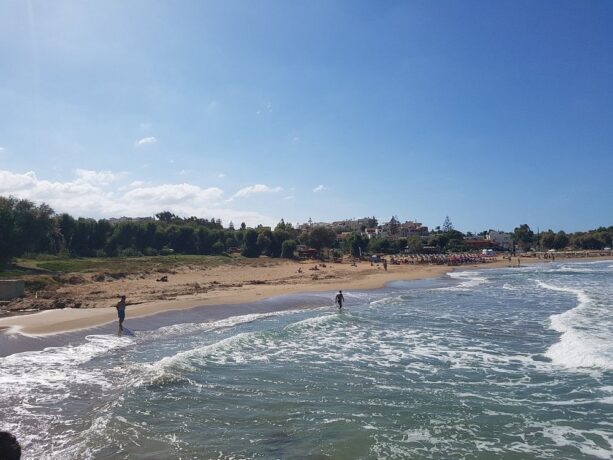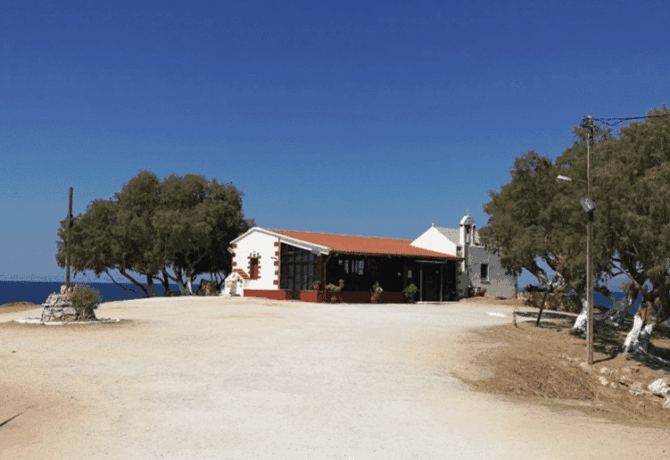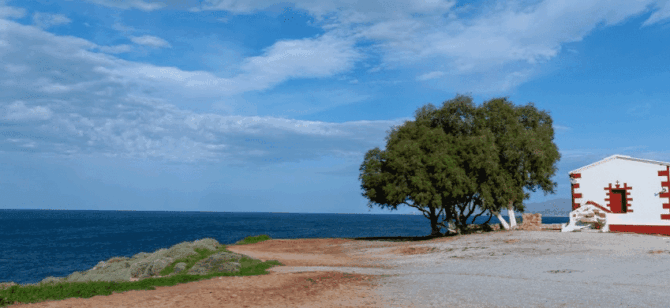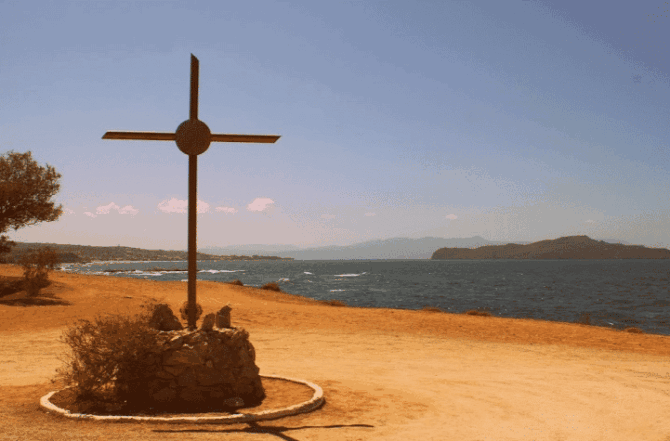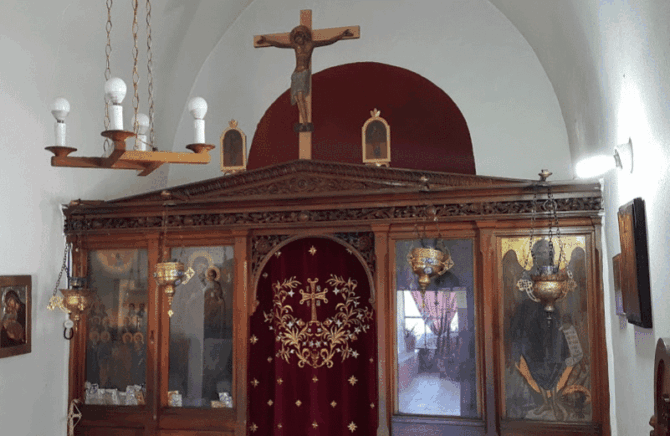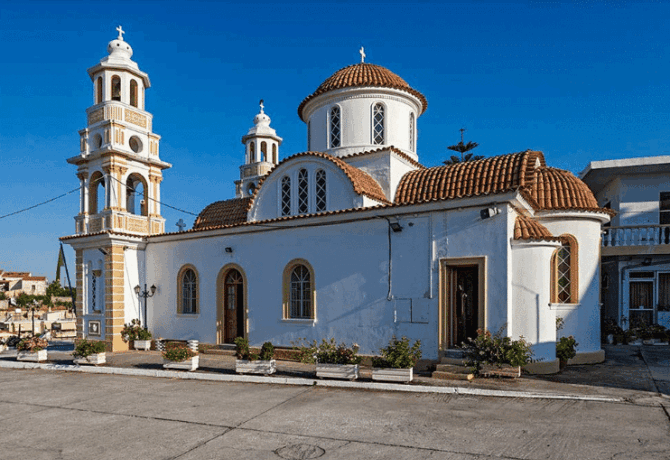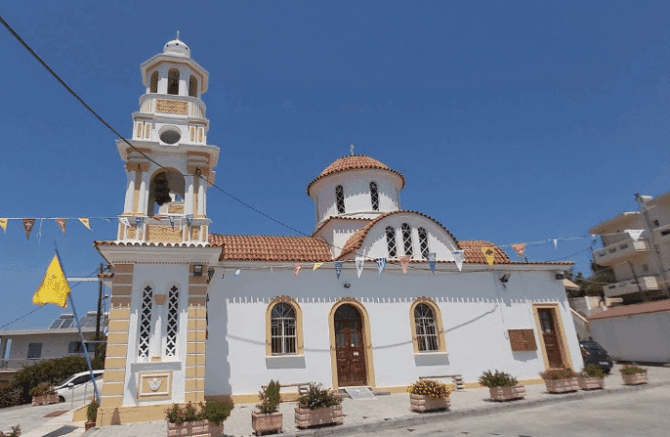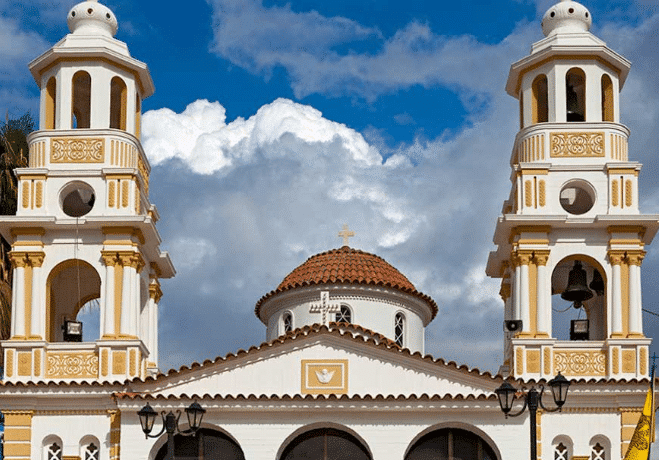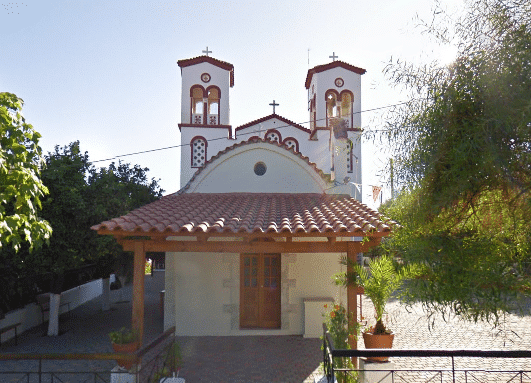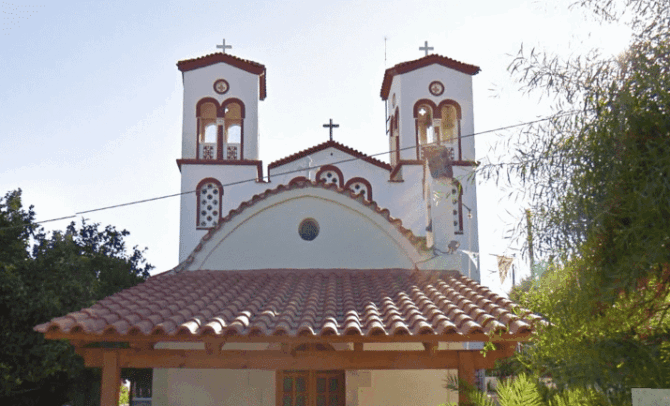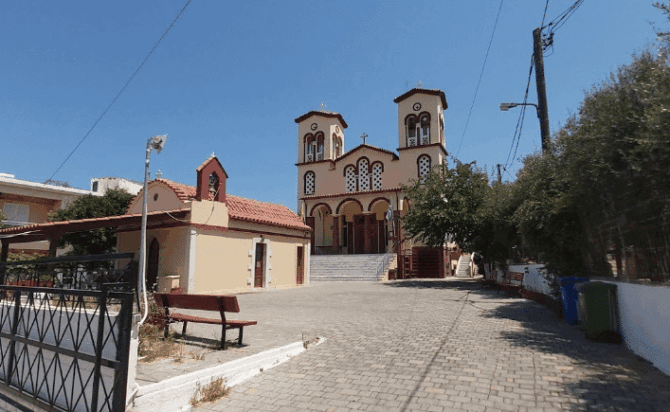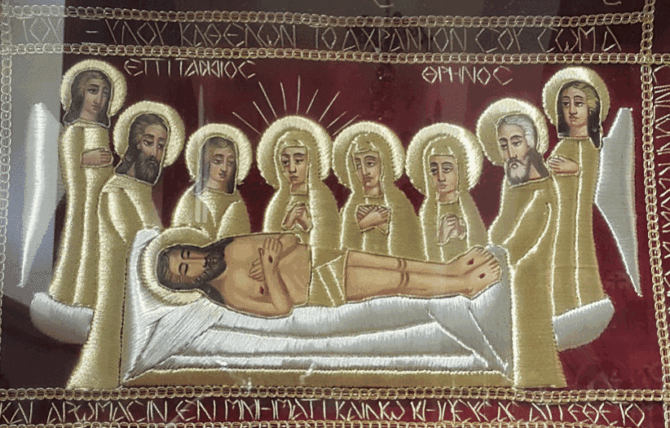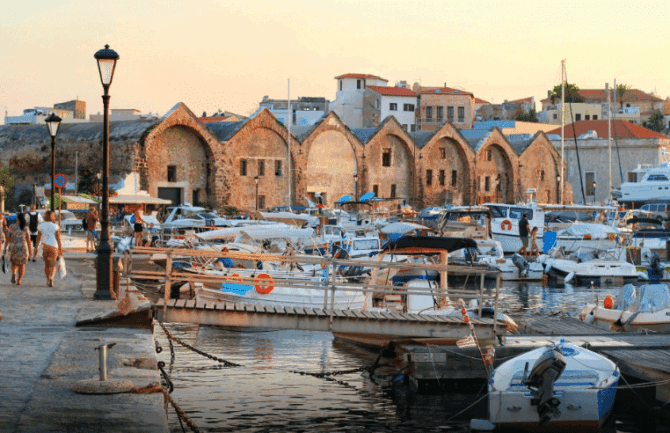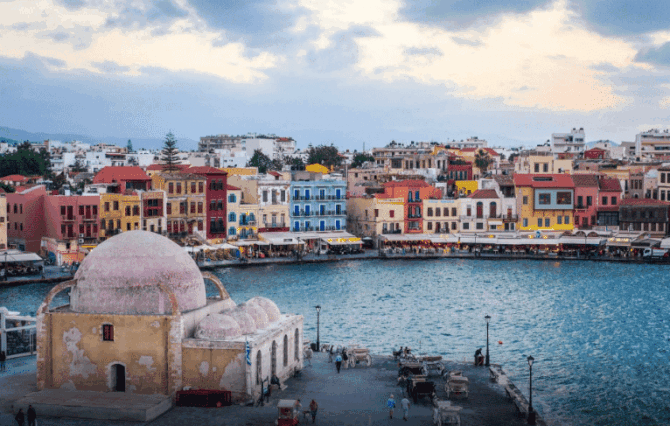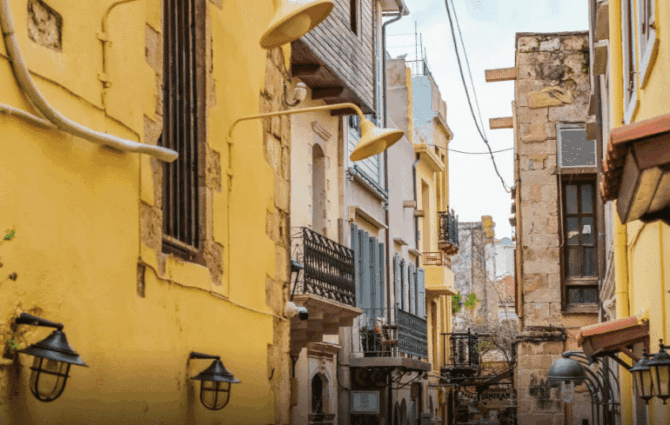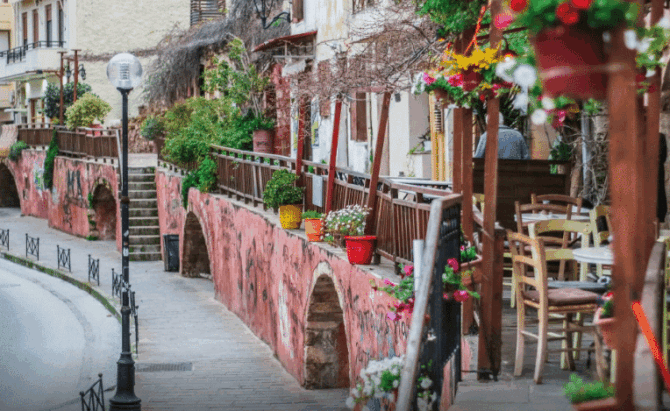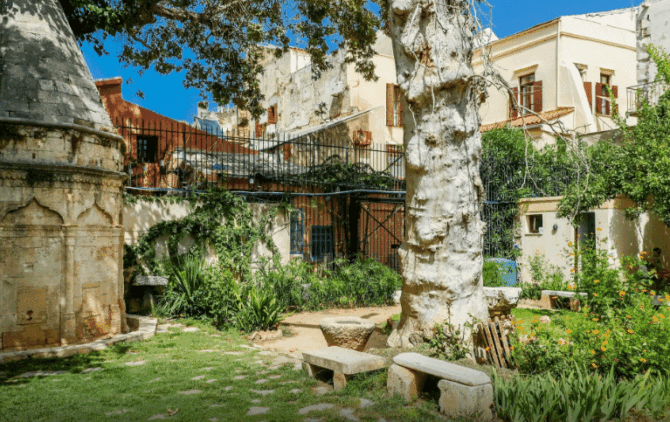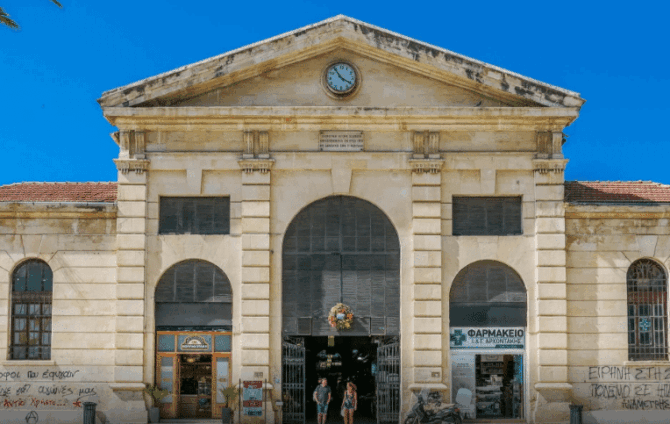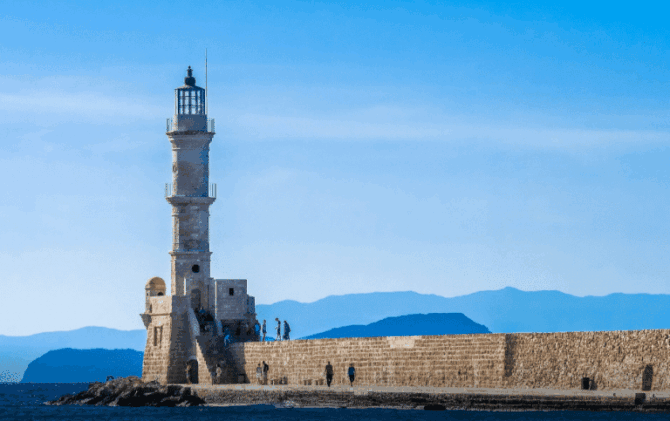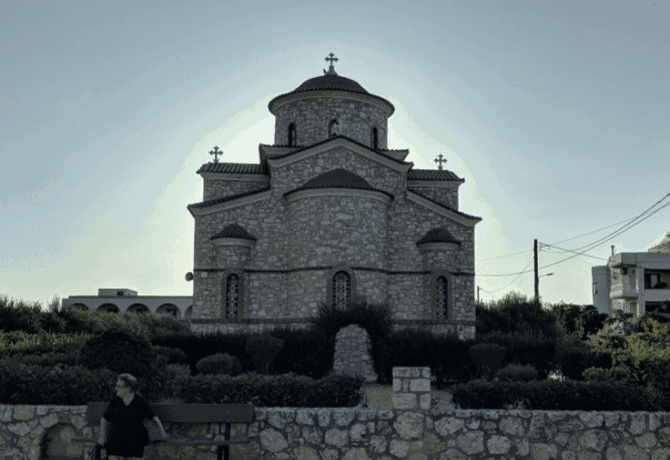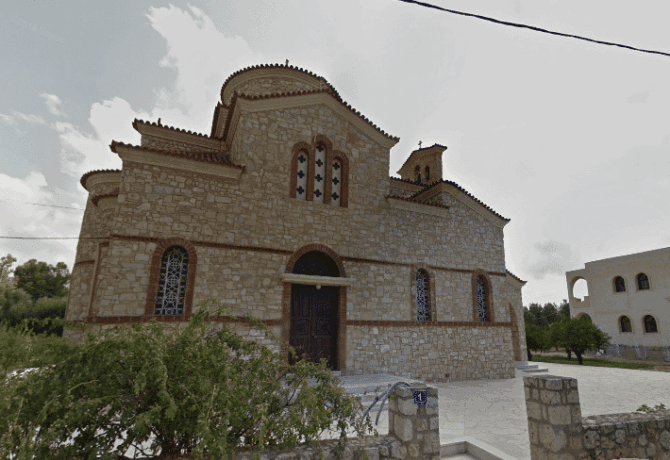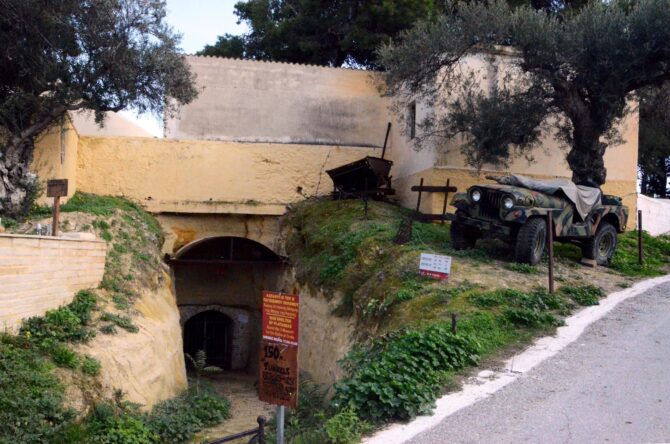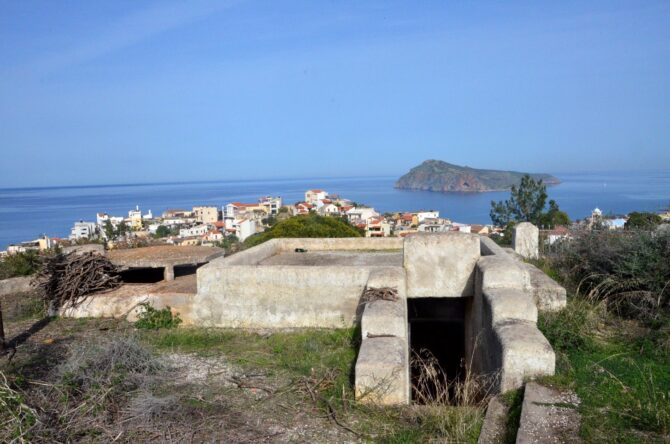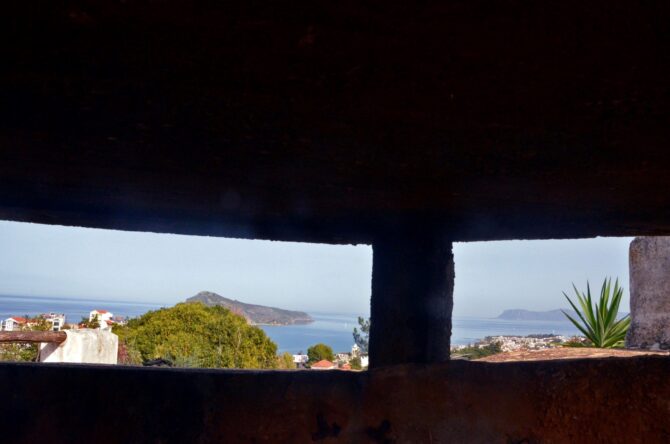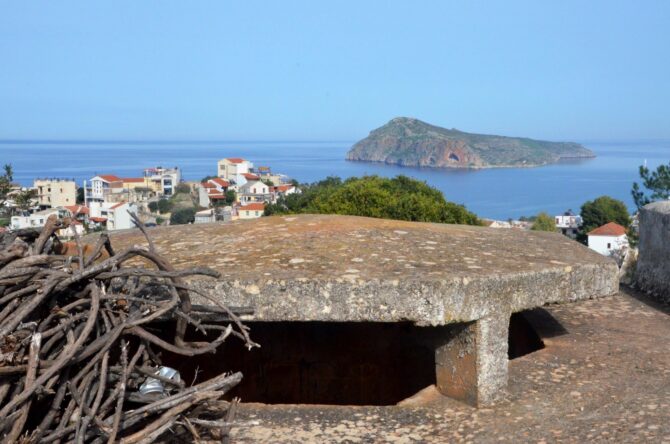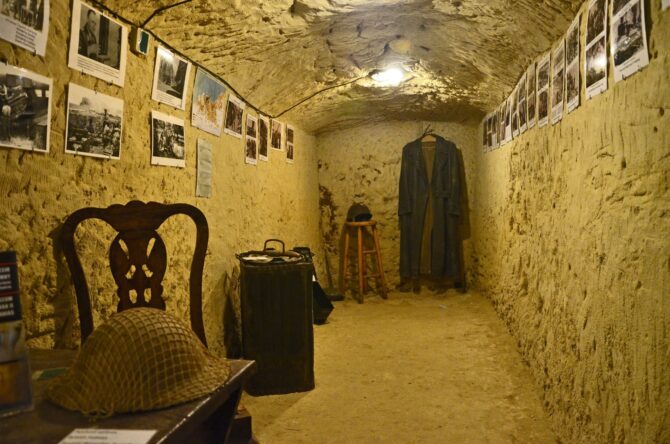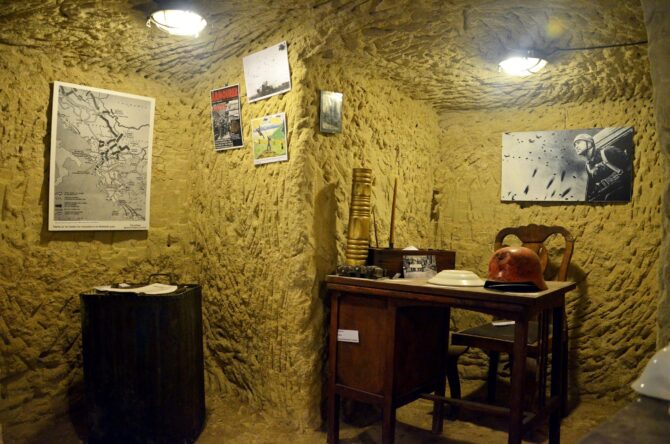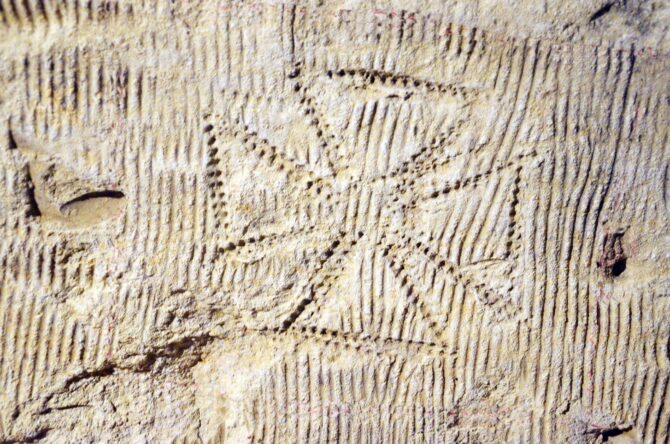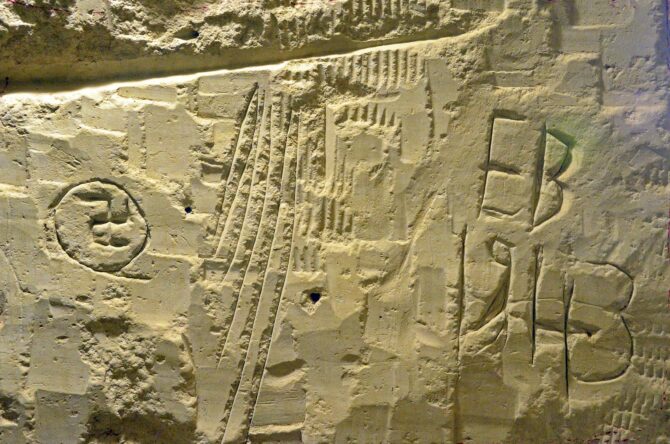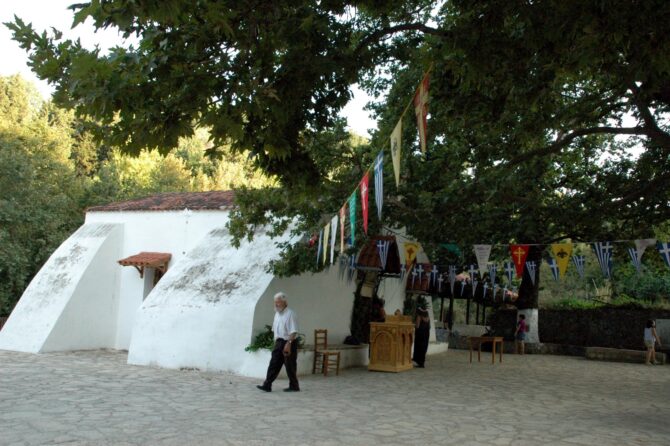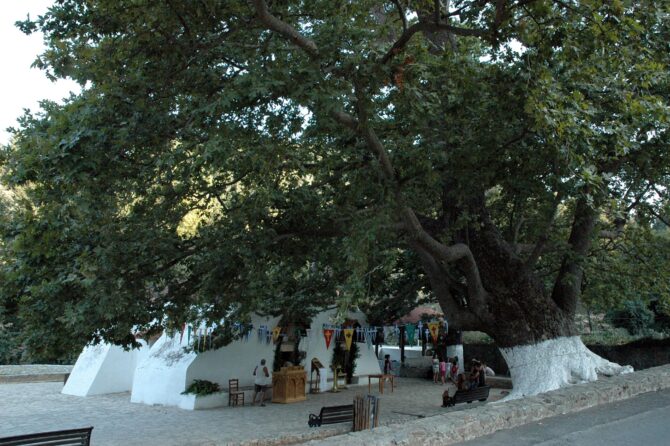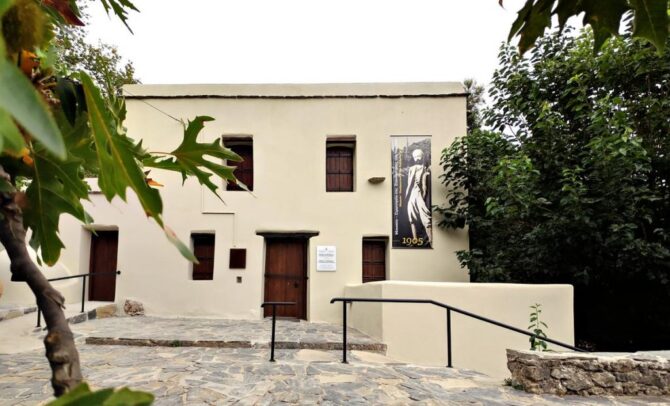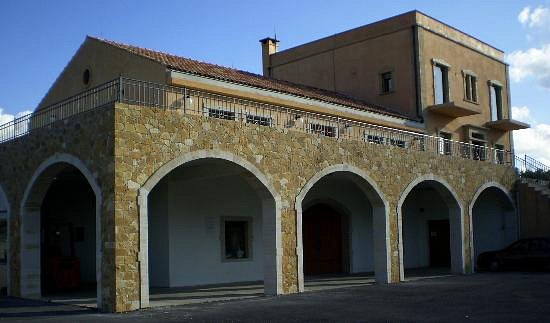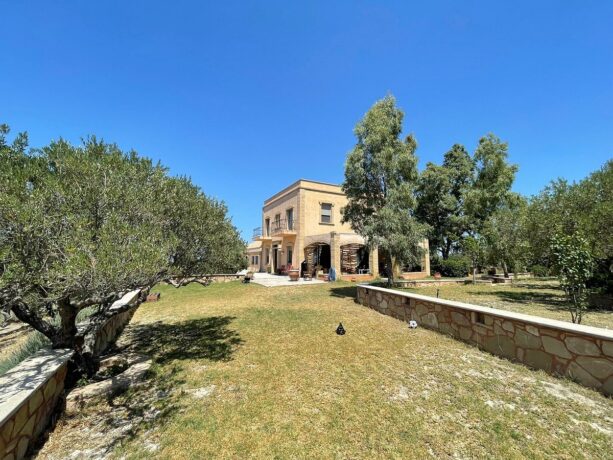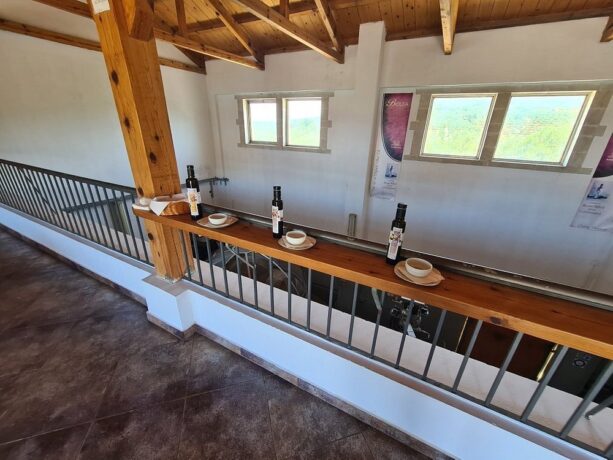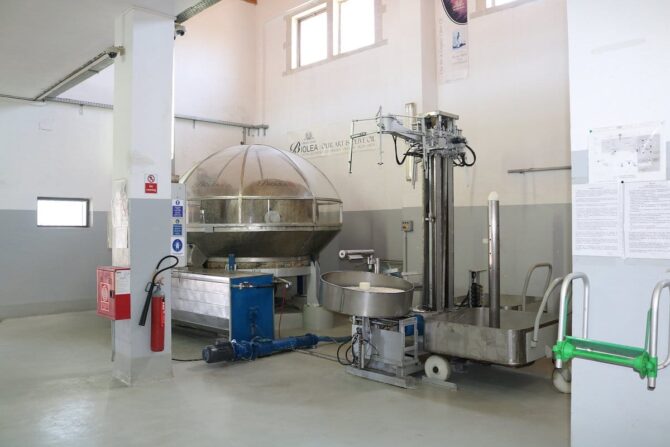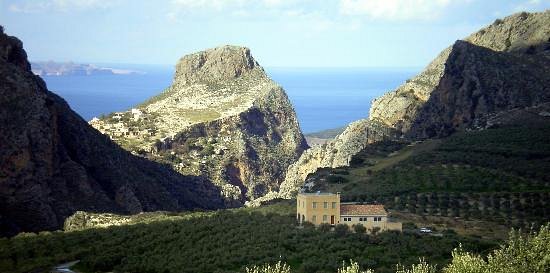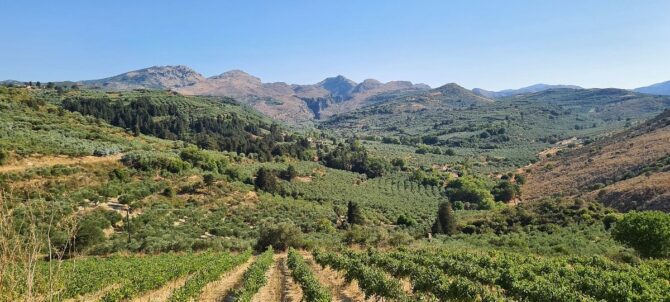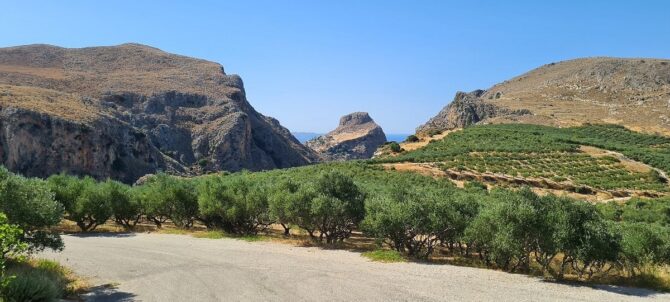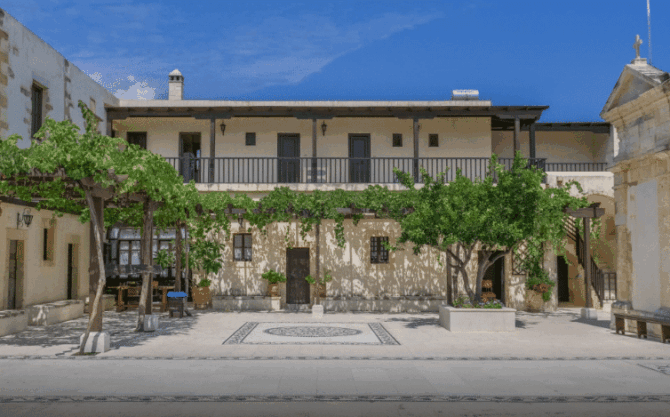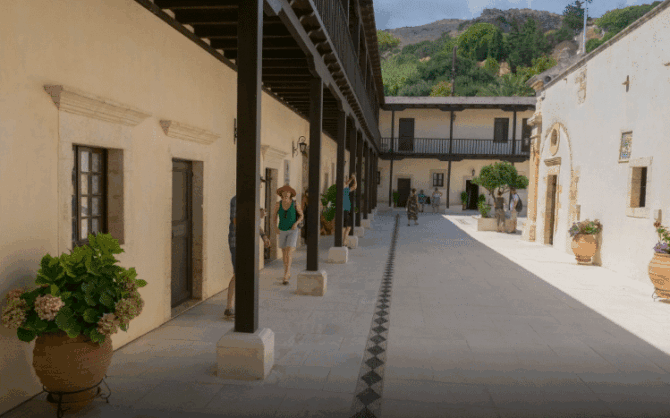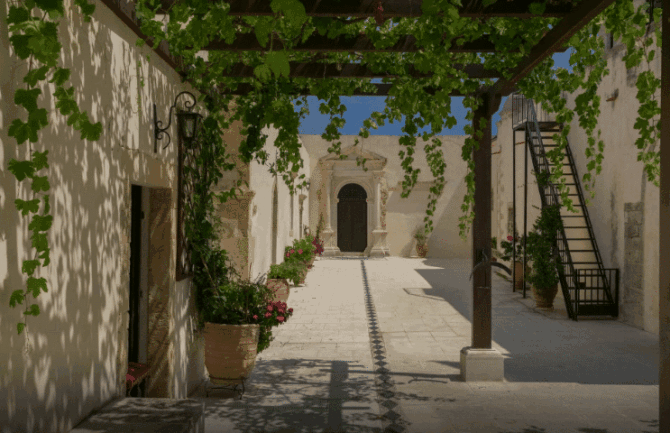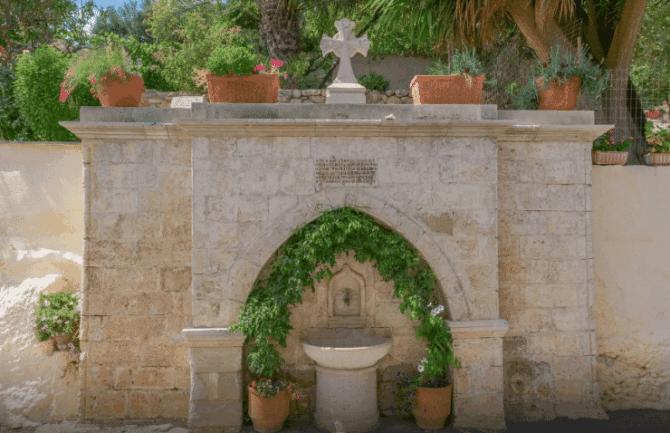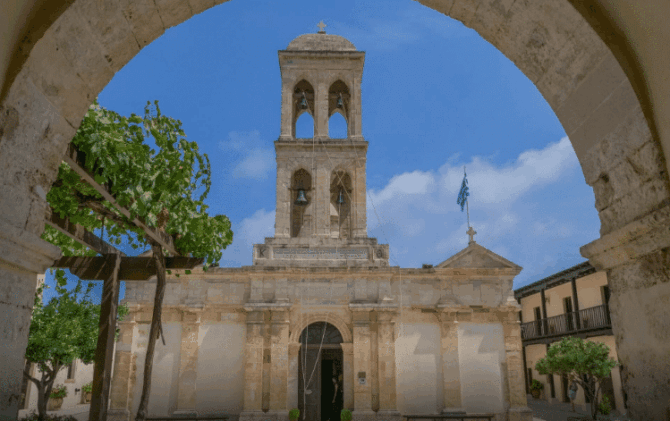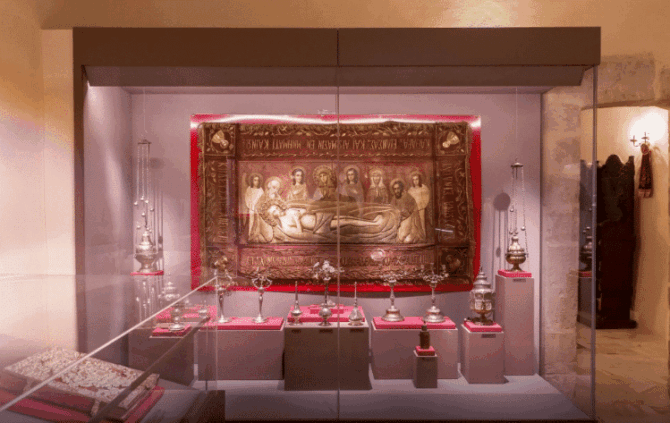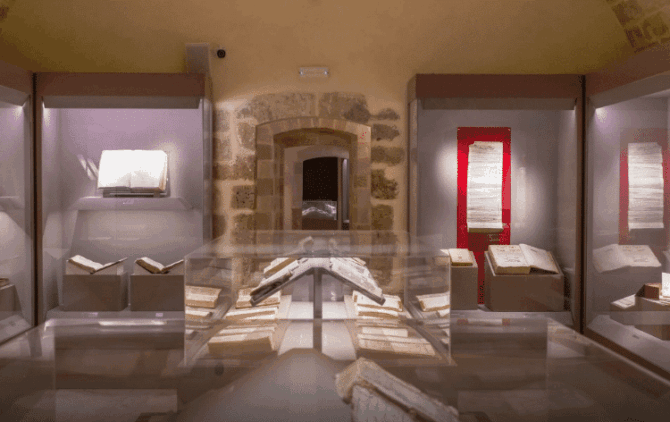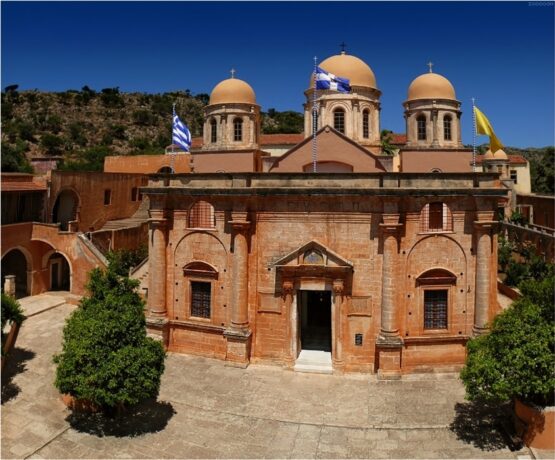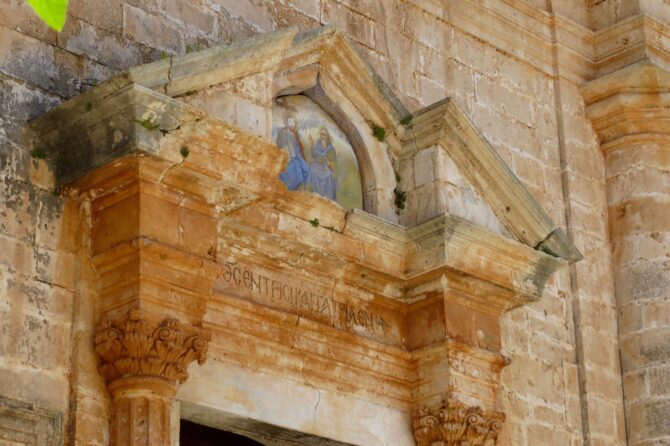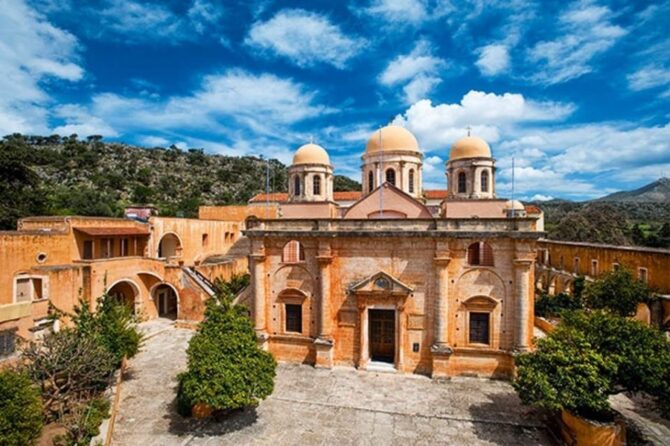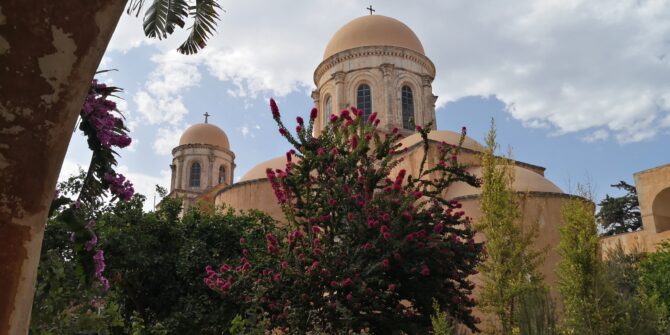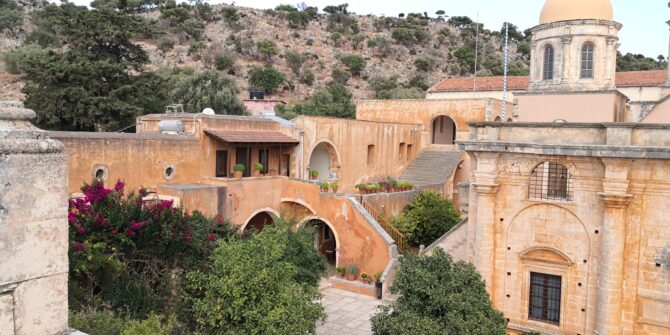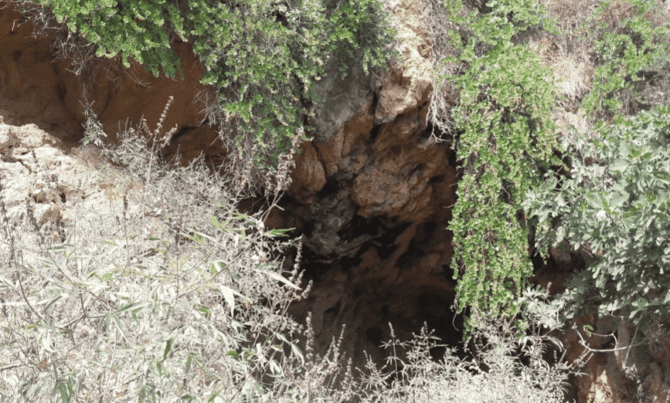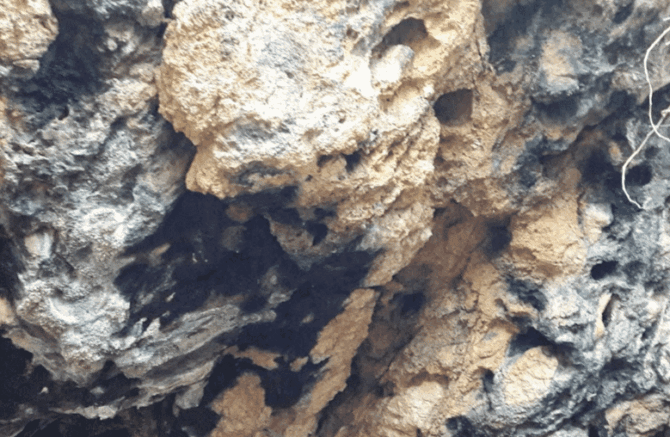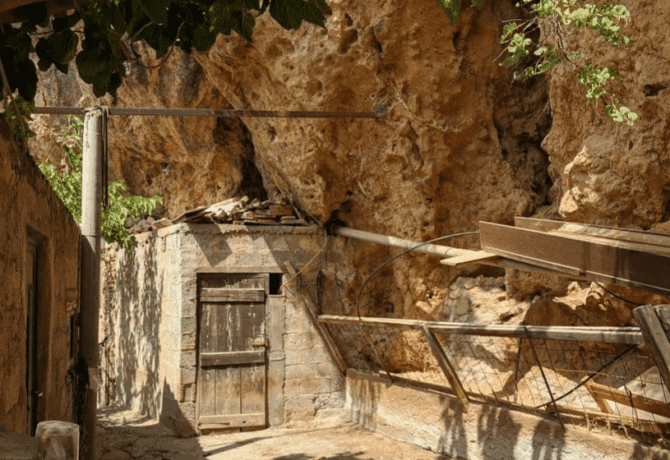Sources differently call Agia Apostoli – a place located 4.4 km west of Chania (the nearest major city) and 143 km from Heraklion (the administrative center of the island). This is a village, a microdistrict, a village and even a city. Agia Apostoli is known to tourists as a modern resort with three clean sandy beaches, entertainment on the water, sacred structures and amazingly beautiful nature.
The local climate is characterized as Mediterranean. Tourists relax on the beaches of the resort from mid-May to the end of October. In the summer months, the air warms up to + 27.2 … + 29.8, water – up to + 22.9 … + 26.5. Heavy rainfall is typical for winter – up to 128.4 mm per month. Summers are quite dry and sunny. Rainy days are rare. In terms of precipitation (in mm), June is the leader – 21.8, in July – 2.5, in August – 11.6.
The resort got its name from a small temple located in the village. Agia Apostles can be translated as “Holy Apostles”. The address of the resort village: Daratsos 731 00.
- 1 Attractions Agia Apostoli on map
- 2 Promenade and beaches of Agia Apostoli
- 3 Chapel of the Holy Apostles
- 4 Church of St. Panteleimon
- 5 Church of Agios Fanourios
- 6 Chania
- 7 Chrysopigi Monastery
- 8 Platanias Military Shelter
- 9 Gorge and village of Terisu
- 10 Biolea Astrikas Estate
- 11 Gonya Monastery
- 12 Venetian Monastery of the Holy Trinity Tsagarolon
- 13 Nerospilia Cave
Attractions Agia Apostoli on map
Promenade and beaches of Agia Apostoli
The picturesque coast of the resort village is surrounded by three bays of different sizes, located between two capes and the peninsula. Thanks to such a rugged landscape, high waves in these places are quite rare. The embankment, stretching for 1.3 km, is under state protection. Here you can take refuge in the shade of pines, eucalyptus and palm trees.
The promenade is decorated with oleanders, sea daffodils and other flowering plants. In late summer or early autumn, a sardine festival is held here. Everyone can try fish dishes cooked on the grill and listen to the performances of local musicians.
Tourists come to the crowded promenade for leisurely walks, contemplation of colorful sunsets or acquaintance with Cretan dishes in cafes, taverns and restaurants located here or nearby:
- Nesaki;
- Sunset;
- Golden Bay;
- Iguana;
- Salavantes;
- Pita;
- Blue Sea;
- Irida;
Agia Apostoli is known for its beaches covered with clean sand. Each of them is equipped with showers, comfortable sun loungers, toilets, changing cabins and bamboo umbrellas. In the resort village there are three beaches, which in the summer months are always crowded with vacationers:
- “Golden Beach” is the largest in Agia Apostoli; length – 750 m; width – from 15 to 25 m; not far from the beach there is a large park;
- “Iguana” is considered a party place for young people; beach length – 280 m; width – from 9 to 40 m; next to the “Iguana” is a large volleyball court;
- “Giannis” is suitable for lovers of quiet pastime and swimming under water in a mask; length – 196 m; width – from 7 to 60 m; near the beach there is a stadium and a children’s playground.
Between the “Golden Beach” and “Iguana” there is a spacious parking. Motorists get here on the E-75 road, which stretches along the entire northern coast through Heraklion and Chania.
Chapel of the Holy Apostles
On a low rocky cape near the beach “Iguana” is a small temple, in whose honor the resort is named. The chapel of the Holy Apostles is surrounded by several fluffy pines. A small building of the temple can not be immediately seen among the trees. From here you can enjoy wonderful views of the picturesque bay. Tourists come to this place on summer evenings to admire the bright colors of the Cretan sunsets.
The chapel consists of two low buildings connected to each other. One of them is white. The second is just below with a brown roof. The first building is decorated with a small belfry, crowned with a barely noticeable Latin cross. Visitors go inside a small hall that can accommodate up to 15 people. The room is decorated with a modest iconostasis with images of the apostles.
The sources say nothing about the history of the chapel. Despite the dilapidated facade of the temple, it becomes obvious to visitors that the sacred structure was built only a few decades ago and managed to “grow old”. The doors of the chapel of Agia Apostoli are open to all comers throughout the calendar year.
Address: Galatas 731 00.
Church of St. Panteleimon
In the southern part of the resort village among the hotels stands the building of a new temple – the Church of St. Panteleimon. The structure is decorated with a large dome of dark brown color and two towers-belfries. The bell towers are noticeably higher than the church. The religious building is located in the place where st. Panteleimon Street intersects with the road going from Kissamos to Chania.
From the temple to the sea coast – almost 800 meters. Tourists vacationing on the local beaches willingly overcome this short distance to visit this church.
Address: Daratos 731 00, Agio Panteleimonas, 30
Church of Agios Fanourios
In September 1992, a new church was opened in the resort village – the Church of St. Fanourios. The ritual building is named after an Orthodox saint who lived in the III century. Fanourios means “being”. The saint was called Rhodes, as archaeologists found his icon on Rhodes, a famous Greek island.
The church building is located about 600 m south of the sea coast and 220 m north of the E-65 – Vorios Odikos Axonas Kritis road. The front façade of the church is decorated with three graceful arches and several dark brown columns. Above the roof of the temple rise two symmetrical towers-bell towers.
The walls and high vault of the inner hall of the church are skillfully painted by Greek artists. The rich iconostasis and massive chandeliers hanging from the ceiling create a solemn atmosphere. The spacious hall can accommodate up to 100 people. In the churchyard, covered with thin tiles, a small chapel was built, the roof of which is decorated with a belfry with a bell and a Greek cross.
Church address: Agios Fanourios, Galatas 731 00
Chania
Resting in Agia Apostoli, tourists certainly try to visit neighboring Chania. Until 1971, this ancient picturesque city, home to almost 55 thousand people, was the administrative capital of the island. The history of Chania dates back several hundred years. In ancient times, there was Cydonia – a Greek polis, about which little reliable information has been preserved.
Since 1210, the territory of modern Chania was ruled by the Venetians. Under them, the city turned into a major shopping center. In 1645 Chania was captured by Turkish troops. Only in 1913 the city, like the whole island, again became Greek. Modern Chania covers an area of 12.56 sq. km. This is about 9 times less than the total area of Heraklion.
Chania can be divided into two unequal parts: New and Old Town. Tourists come here to get acquainted with the historical sights of the resort. Among them, a group of the most interesting objects stands out:
- Firkas – a medieval fortress, built by the Venetians in 1629; tourists, climbing the preserved walls of the citadel, are happy to consider the old port and seascapes;
- Maritime Museum, located on the territory of the fortress; the doors of the establishment are open daily from 9 am to 5 pm; entrance fee – 3 euros; in the halls of the museum there are models of Greek ships plying the seas in different historical eras; one of the most interesting exhibits is a model of Chania of the XVII century;
- lighthouse erected by the Venetians in 1570; the base of the structure has an octagonal shape; the upper part is round; lighthouse height – 21 m;
- The Archaeological Museum is rich in artifacts dating back to the Minoan and Roman eras;
- city market, built in 1911; here visitors can buy not only traditional spices, but also books, olive oil, newspapers, honey;
- The Historical Museum tells with the help of exhibits about the struggle of the inhabitants of Crete for reunification with Greece;
- Cathedral, restored in 1861; the temple is decorated with decorative columns; high bell tower gives the building of the sacred structure a majestic and solemn appearance;
- The Football Museum is rich in exhibits telling about the history of the sports game, loved by many Greeks; here visitors can see and even try on T-shirts of famous players: Ronaldo, Platini and others;
- Church of St. Nicholas, built in 1320; in the era of Turkish domination, the temple building housed a mosque, from which a high minaret remained;
- Zambeliou Street, which attracts tourists with its old houses; walking along it, guests of the resort, as if they find themselves in a distant Venetian era.
The sea coast of Chania stretches for 7 km. Part of this strip is occupied by a sandy beach. Its width is from 43 to 20 m, length – 410 m. In the evenings, numerous foreign tourists and locals walk along the landscaped embankment. From Agia Apostoli, Chania can be easily reached by car on the E-65 road or by any bus going towards this picturesque city. The best time to explore the resort is the warmer months.
Chrysopigi Monastery
About 3 km south of the historical center of Chania are the “possessions” of the monastery complex, named after the Virgin – the Life-Giving Spring. The sacred structure was founded by John Hartofilakas – a Greek physician and philosopher – at the end of the XVI century. During this historical period, the Venetian rule in Crete ended.
In 1812, the Turks, who seized the island, ravaged and destroyed the monastery of Chrysopigi, which was then a male abode. The revival of the complex began in 1848 Almost a century lasted the existence of the monastery, which was again destroyed during the war with Nazi Germany in 1939-1945.
Restoration work began only in 1976 Chrysopigi Monastery became a women’s monastery. Now this complex, together with agricultural lands belonging to it, occupies an area of 300 thousand square meters. m. Transfiguration Cathedral has the status of the main temple of the monastery. On the monastery territory there are also five chapels named after saints:
- St. John the Evangelist;
- Catherine;
- Charalamba;
- John Kalivit;
- Arseny of Cappadocia.
The first two chapels are inside the main cathedral. On the territory of the monastery there are also two museums: church and folklore. In the first institution you can see the collection of antique icons, sacred utensils, crosses, documents, samples of gold embroidery and much more. In the Folklore Museum, visitors get acquainted with the products of Cretan artisans. The life of the nuns of the monastery is filled with a variety of activities:
- iconography;
- interweaving and publication of books;
- stone and wood carving;
- prayers;
- cultivation of vegetables and fruits;
- beekeeping;
- production of incense and candles;
- brewing soap;
- sewing;
- mural of temples.
The monastery complex is constantly visited by pilgrims and ordinary tourists. The doors of the monastery and museums are open daily from 8:00 to 12:00 and from 15:30 to 18:00. Admission is free. The E-65 highway runs 1.2 km south of the monastery. Most tourists visit the monastery during their summer holiday at the resort.
The address of Chrysopigi Monastery: Chryssopigi Monastery, Patriarchoi Vartholomaioi, Chania 731 00.
Platanias Military Shelter
About 7.5 km west of the center of Agia Apostoli is a place associated with the struggle of the Cretan inhabitants against the German occupation. Tourists know it as the military shelter Platanias, located on the southeastern outskirts of the village of the same name. The history of this structure began in 1942, when German troops captured Crete. From the island it was easy to control the sea routes. The Nazis, who occupied the village, built underground tunnels and used them for three main purposes:
- for military accommodation;
- protection against aerial bombardment;
- ammunition storage.
The place for the construction of the shelter was not chosen by chance. A low hill, inside of which tunnels are dug, consists of limestone – soft rock. The shelter was located under the foundation of the Church of St. Demetrius. The temple protected the tunnels from aerial bombardment.
After the war, the locals began to use the shelter as a large pantry. For this purpose, the tunnels provided ideal conditions: dry, warm, constant temperature + 23 degrees. Since 2013, the former shelter has functioned as a Memorial Museum. In the long tunnels there are exhibits telling about the struggle of the Cretan inhabitants with the German occupiers:
- items of military life;
- photos;
- documents;
- maps;
- military uniform.
The doors of the Memorial Museum, which is located 730 m from the sea coast and 350 m from the national road E-65, are open from Monday to Saturday from 10:00 to 12:00 and from 17:00 to 19:00. Admission is free. Most tourists come here in the summer months. From Agia Apostoli and Chania, motorists take the E-65/90 – Vorios Odikos Axonas Kritis road.
Address: Platanias 730 14
Gorge and village of Terisu
Among the natural sites located near Agia Apostoli, the Gorge of Therisu stands out. It is about 7 km from the historic centre of Chania. The distance from Agia Apostoli to the beginning of Terisu is half a kilometer more. The gorge, which is 6.5 km long, is located to the south of both resorts.
Therisu differs from other similar natural sites in Crete by allowing motorists to drive here on an asphalt road that goes along a winding river. Flora, fauna, landscapes encountered by tourists on the way, are very diverse:
- high sheer cliffs on both sides of the gorge;
- goats and sheep;
- picturesque valley;
- Sarakina Cave;
- plane trees, oleanders, olives, dragon aronniks and other trees, shrubs and flowers.
The gorge ends at the village of Terisu. The small village is known as the center of the heroic struggle of the Cretans to join Greece. At the beginning of the XX century, the headquarters of the rebels was located here. Now it has been turned into a museum dedicated to the liberation struggle, which was headed by E. Venizelos, who later became the Greek Prime Minister. The mother of the future politician was born in Terisu.
Getting acquainted with the few sights of the village, tourists will certainly pay attention to the monument to E. Venizelos. In Therisu, the doors of two small churches are open: St. George and Panagia. Guests of the village can visit the local taverns, which serve delicious Cretan dishes:
- Antaris;
- Madares;
- Metepizi;
- Limeri;
- Leventogiannis;
- Madares Essen.
From Chania and Agia Apostoli, tourists get on the Manou road, which ests to Vasiliou Poulaka. Travelers pass by Perivolia and Garipa, two small villages. The most suitable time to explore the gorge is the end of spring and summer. During this period, the weather pleases with sunny days, and nature surprises with bright colors.
Address of the beginning of the gorge: Vasiliou Poulaka, Perivolia 731 00
Biolea Astrikas Estate
About 30 km southwest of Agia Apostoli is a place for the sake of acquaintance with which tourists overcome a relatively long distance. The Biolea factory in the Astrikas estate, located in the municipality of Platanias, is a family-owned olive oil company. Now the business is conducted by representatives of the fifth and sixth generations of Dimitriadis.
Olive oil is produced in the factory by millstone milking and cold squeezing. Traditional technologies are combined with innovation. The oil is made from olives grown on the territory of the estate. Biolea Astrikas Estate offers free guided tours. The event, which lasts from 45 to 60 minutes, includes several interesting events:
- visit to the factory;
- watching a short film about the process of olive oil production;
- familiarity with the equipment;
- tasting of three types of products.
Tours are held from 10:00 to 17:00 from Tuesday to Sunday. In summer, there is a bar on the territory of the factory, where you can drink coffee in Greek and get acquainted with the taste of Cretan wine. Biolea is often the venue for Greek music concerts, exhibitions, conferences and other events.
To get to the factory from Agia Apostoli, travelers take the E-65 road towards Kolimvari. Motorists need to turn south at the village of Vagi and continue through the villages: Spilja, Dragon and Episkopi. The route follows the Kalimvariou-Panethimnos road.
Travelers need to follow the signs in order to turn right in time and continue the journey to the factory. Excursions to the Astrikas estate are organized in Chania.
Factory website: https://www.biolea.gr/
Address: Astrikas Kolympari, Chania 730 06
Gonya Monastery
Tourists who are interested in getting acquainted with the religious buildings of Crete should definitely visit the monastery of Gonya, located 22 km west of Agia Apostoli on Rhodopos – a picturesque peninsula. The monastery, towering over the Bay of Chania, is a building similar to a medieval fortress.
The history of the monastery is full of dramatic events. The monastery was founded in 1618 and illuminated in 1634 The monastery was twice destroyed by the Turks – in 1652 and 1867 Restoration work returned to its former appearance. The monastery also had to be revived after the German occupation, which ended in 1945.
Now the monastery of Gonya, dedicated to the Assumption of the Virgin, is a large complex surrounded by powerful stone walls. In 1968, the Orthodox Academy of Crete opened its doors near the monastery. The monastery complex includes several objects:
- the main temple;
- chapels;
- refectory;
- outbuildings;
- cells of monks;
- a bell tower erected in 1849;
- library;
- Turkish fountain, built in 1708
Among the icons placed in the main temple, there are several images painted in the XVI-XVII centuries. Among the authors there are the names of such famous cretan monks in the past as the Nile, Ritsos and Parthenius. The monastery complex can be visited daily from 8:00 to 12:30 and from 16:00 to 20:00 (in winter – from 15:00 to 17:00).
Motorists departing from Agia Apostli to the monastery take the E-65 road towards Kissamos. Near the village of Vagi you need to turn north and drive past Kolymvari for another 2.5 km. In order not to stray from the path, travelers should follow the signs.
Address: Gonia Monastery, Kolymvari 730 06
Venetian Monastery of the Holy Trinity Tsagarolon
On the territory of Crete there are many monasteries built in the distant past. Tsagarolon – the Venetian monastery of the Holy Trinity, located almost in the middle of the Akrotiri Peninsula, – is one of the most majestic sacred buildings in Greece. The monastery is located 17 km northeast of Chania and 22 km from Agia Apostoli.
The monastery was founded by the Tsagarolon brothers: Jeremiah and Lawrence. The project of the future monastery began to be developed in 1611 The construction of the sacred structure ended in 1634 Jeremiah and Lawrence belonged to a noble Cretan-Venetian noble family. For their era, future monks were unusually educated people.
Before modern visitors appears the monastery complex, reminiscent of a massive medieval fortress. The main temple of the monastery is decorated with powerful columns built in two styles: Ionic and Corinthian. In the spacious hall of the church, the attention of visitors is attracted by antique icons painted in the XVI-XVII centuries. On the territory of the monastery complex there are several other buildings:
- bell tower, erected in 1864;
- museum, where icons, paintings, church utensils are stored;
- seminary, opened in 1892;
- church shop;
- Outbuildings.
The courtyard looks especially cozy in the warm season. Here you can sit on benches in the shade of branchy trees, admiring the flowering of subtropical plants. In the church shop, guests buy products that are produced by monks living in the monastery of the Holy Trinity:
- honey;
- olive oil;
- soap;
- wine.
The monastery is surrounded by picturesque hilly terrain with vineyards, olive groves and rows of slender cypresses. The monastery is open to visitors daily from 8:00 to midnight. In winter, access to the monastery is closed from 14:00 to 16:00. The cost of the entrance ticket is 2.5 euros.
From Agia Apostoli tourists get to the monastery as part of excursions. Independent travelers drive along the Aerodromiou Soudas road, which turns into Epar. Od. Profiti Ilia-Monis. Indicators will help not to miss the turn.
Address: Moni Agias ton Tzagkaroton 731 00
Nerospilia Cave
Foreign tourists are happy to get acquainted with the natural sites of Crete. One of them is the cave of Nerospilia, located 10 km southwest of Agia Apostolia. This natural object is located on private territory, so before visiting tourists it is necessary to ask permission from the owners of the land.
The cave, consisting of two halls, is not equipped with anything. Therefore, travelers should take flashlights with them and wear comfortable shoes. The beauty of unusual natural sculptures, formed by stalactites and stalagmites, compensates tourists for the inevitable inconveniences. The path to the cave from Agia Apostoli involves a trip along several roads:
- Kissamou Chanion;
- Ampela;
- Ioannis Kapodistrias.
Further, travelers cross the E-65 road and continue past the villas: Life, Ariella and Meliades. Signs will help motorists get to the monastery. Usually tourists come to the cave in the summer months.
Address: Cave Nerospilia, Chania 713 00
Agia Apostoli – a resort for fans of beach holidays, Cretan nature and Greek history
The population of a small resort village increases markedly in the period from May to October. At this time, Agia Apostoli is crowded with foreign tourists. Travelers come to the resort to relax on the well-equipped sandy beaches.
Inquisitive tourists show a sincere interest in the natural objects of the surrounding area, as well as in historical and sacred buildings in the resort and near it. Holidays in Agia Apostoli help travelers discover the features of Cretan life, little known to foreigners.

